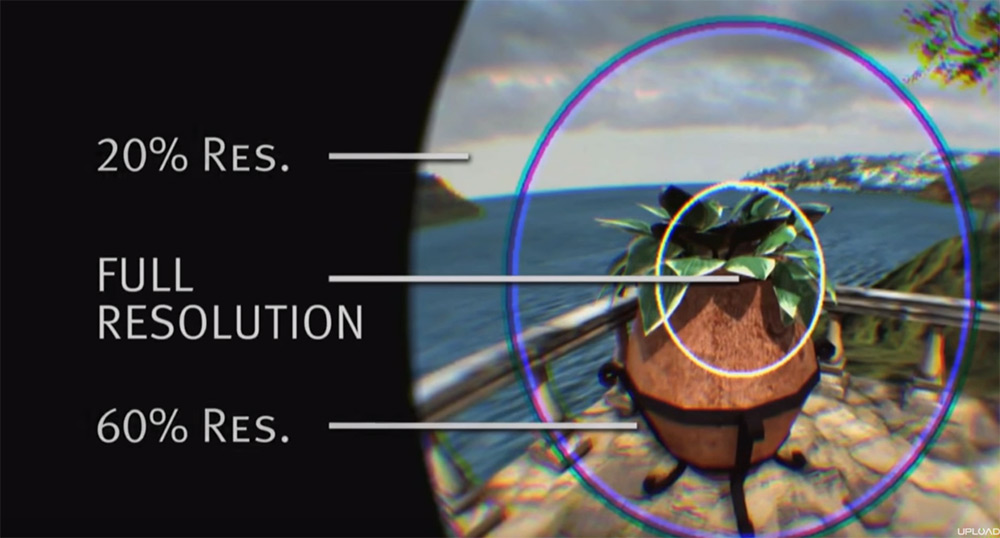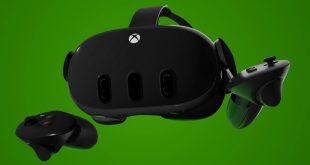In-case you weren't aware already, running a virtual reality headset is not something many PCs can do. In-fact, based on the recommended specifications, it's something only a few per cent of PCs can do. That won't always be the case though, with incoming software tweaks making it so VR could actually be the cheapest, entry level gaming solution in the future.
That sounds ridiculous of course. How can VR go from having one of the highest minimum specifications for hardware to having one of the least? It's all to do with the fact that while VR lets you see more than ever before, it doesn't need to. With a 2D screen display, everything on it needs to be in high-focus, high-resolution and high-fidelity at all times. That's not actually the case with VR.
It is right now, because without some way to track where the user is looking we need to make sure everything looks great, which is why the current specs for the Oculus Rift are so high – there's two high-resolution displays to power in there. But in the future, when eye tracking and foveated rendering come into play, that won't be necessary anymore. [yframe url='http://www.youtube.com/watch?v=Qq09BTmjzRs']
What foveated rendering does is track where the user is looking and then render the scene appropriate to their eye placement. Like traditional optimisations that mean you don't need to render what's behind a gamer, or behind the next corner, foveated rendering means you only need to show the user's focal point in highest clarity. Everything else can be reduced, saving massively on system resources.
Although eye tracking isn't the easiest, it is doable and at CES this year SensorMotoricInstruments showed it working at 250Hz too, all integrated into a VR headset (as per RoadtoVR).
As VR headsets grow in detail and complexity over the next few generations, the effect of this technique on reducing performance overhead will only increase. One day soon, when we're all running 8K monitors, the headset, with eye tracking and foveated rendering could well require much less graphical overhead than that 2D display which needs everything in focus at once.
Discuss on our Facebook page, HERE.
KitGuru Says: Suddenly my 280X doesn't feel so scared of trying to run an Oculus Rift now… I'll probably still upgrade though.
 KitGuru KitGuru.net – Tech News | Hardware News | Hardware Reviews | IOS | Mobile | Gaming | Graphics Cards
KitGuru KitGuru.net – Tech News | Hardware News | Hardware Reviews | IOS | Mobile | Gaming | Graphics Cards




As genius as this is it probably should’ve been obvious from the start so that headset devs could get eye tracking cameras in from day one. It’ll be great to see it in action as performance gains will be incredible but it all comes down to the responsiveness of rapid eye movement in the end.
Now we must wait until CV2? 😛
It sounds very clever but i’m sure it would lead to vision problems like tunnel vision, I guess only time will tell, but I just can’t see it being healthy during extended gaming sessions.
That may be so but it’s more to emulate what true vision is. You only focus on one small area in your vision, the rest of it is mostly ignored by the brain. Maybe if it didn’t track your eyes and kept the focal point in the center it would be more of a problem
wtf… depth of field in front of your eyes make user dizzy and want to vomit.
The real world doesn’t actually go out of focus or drop resolution when your not looking directly at it though. Yes it seems like it does but your eyes are still scanning everything in full focus, it’s your brain which decides what needs to be the sharpest looking..not everybody is the same, so I hope they take that into consideration so the effect can be reduced in the games settings.
You get about half of nerves just from Fovea centralis. Here is a diagram of the eye acuity https://upload.wikimedia.org/wikipedia/commons/2/27/AcuityHumanEye.svg
That looks amazing. I would imagine things like this will be utilised in future versions of VR headsets.
So basically they watched Sword Art Online? (or read the light novels… I don’t remember if the anime clarified it)
the Idea is that you wouldn’t notice it because it would be perfect resolution at the exact spot your eyes are focussing on, hence the Eye-Tracking software.
One day soon when we’re running 8k displays? Soon? Really I doubt 4k will even be mainstream in the next 5 years 8k. Gonna by 15+ years a lifetime in the technology business
When people were running multi-monitor setups for racing or space-ship games I wondered why they didnt simply get lower res monitors for the side views to increase performance while retaining a panoramic view.
SAO doesn’t even have VR headset with optics. They’re projecting the image directly into your brain.
Yes, but it still has this technology.
A few days ago new McLaren F1 subsequent after earning 18,512$,,,this was my previous month’s paycheck ,and-a little over, 17k$ Last month ..3-5 h/r of work a day ..with extra open doors & weekly. paychecks.. it’s realy the easiest work I have ever Do.. I Joined This 7 months ago and now making over 87$, p/h.Learn More right Here
3vba……….
➤➤
➤➤➤ http://GlobalSuperEmploymentVacanciesReportsFilms/GetPaid/98$hourly…❦.❦.❦.❦.❦.❦.❦.❦.❦.❦.❦.❦.❦.❦.❦.❦.❦.❦.❦.❦.❦.❦.❦.❦.❦.❦.❦.❦.❦.❦.❦.❦.❦.❦.❦.❦.❦.
A few days ago new McLaren F1 subsequent after earning 18,512$,,,this was my previous month’s paycheck ,and-a little over, 17k$ Last month ..3-5 h/r of work a day ..with extra open doors & weekly. paychecks.. it’s realy the easiest work I have ever Do.. I Joined This 7 months ago and now making over 87$, p/h.Learn More right Here
3abs…
➤➤
➤➤➤ http://GlobalSuperEmploymentVacanciesReportsMac/GetPaid/98$hourly…❦.❦.❦.❦.❦.❦.❦.❦.❦.❦.❦.❦.❦.❦.❦.❦.❦.❦.❦.❦.❦.❦.❦.❦.❦.❦.❦.❦.❦.❦.❦.❦.❦.❦.❦.❦.❦.
I have the DK2, my specs are: i5-3450, 8GB DDR3, GeForce 680 and a 256GB Samsung 850 pro SSD……so quite an old system really. I have played Alien Isolation, Fallout 4, GTA V, Dirt 3, Elite dangerous and many others without any stutter whatsoever.
Well with Foveated rendering that is seemingly getting a push along with Vulkan for VR games 4k might be in all the big VR set’s even before it´s mainstream in 2d screens .Seeing as VR might crazily enough actually become less demanding than regular games. As I can’t imagine fovated rendering would ever look right on a 2d monitor. And that performance gain is huge. And as mentioned, Vulkan could supportkostnad negate the performance hog that is rendering a scene twice by doing some sort of doubling. Well you never know. The future is exciting.
Eeh your brain decides ? No, your eyes convex lens can only focus at a small area . Or most advanced video cameras can only focus at so much at a time as well. This has to do with how optics work. And I´m sure there will be settings for customizing the effect to fit your vision.
Actually… things you aren’t looking at directly *are* at imaged at a lower resolution by your eyes. Nothing to do with the brain. Look up the “Fovea”, which is a pit at the center of your eye which has a *much* higher density of light-sensing cones than the rest of your eye. It’s where the term “foveated” in “foveated rendering” comes from.
As an aside, the eye’s fovea has almost no blue cones, so reading yellow text on white paper (where the only difference is a lack of blue in the text) is really difficult – much more than cyan or magenta text (missing red and missing green, respectively). It also has almost no rod cells (responsible for low-light vision), so you can actually see things better in extremely low light by looking next to them rather than directly at them. Astronomers are well aware of this effect, as looking directly at a dim star can cause it to disappear from your vision!